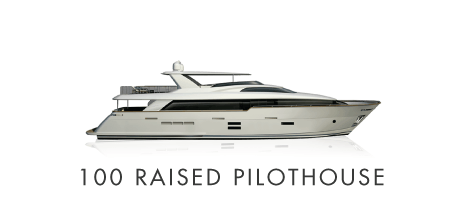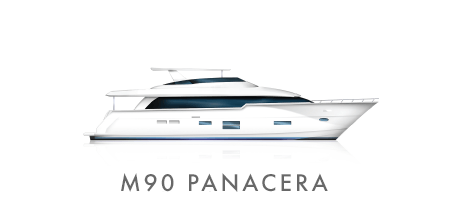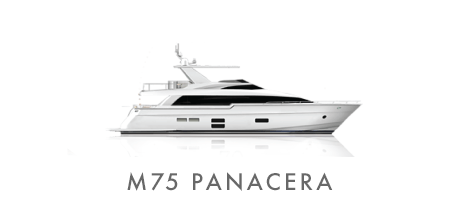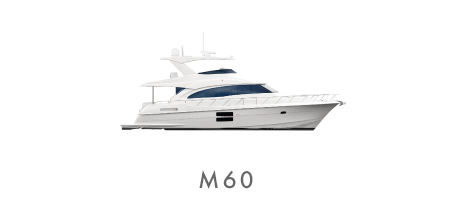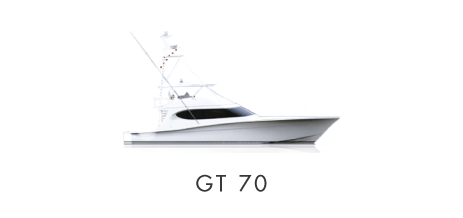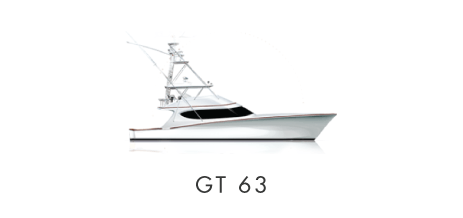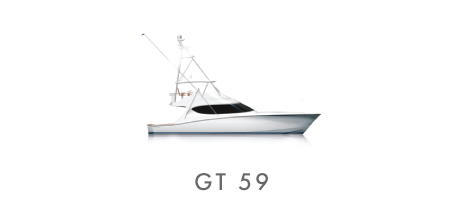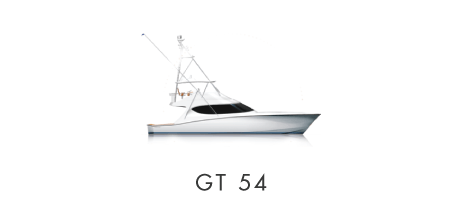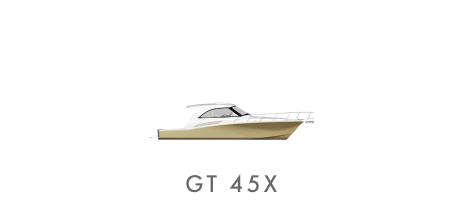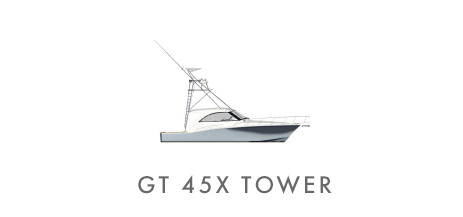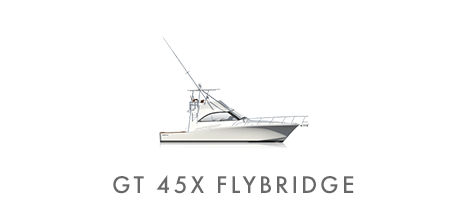
Description
SHEER ELEGANCE
If the legendary wooden boats of our past had kept evolving, how might they look today? Belize could well offer some insights.
We sense they may have stayed with a lower profile than many of today’s offerings. Not just for beauty’s sake, but because the more tall and top-heavy a boat, the more ungainly and susceptible to windage.
The trick is to have a sweet sheerline and profile without it stealing room below decks. On the Belize, the sheer remains fairly flat until gently rising toward the bow.
But in this case, even good looks can be deceiving; the Belize actually delivers greater space— in the sizing of beds, heads, showers, in fact all living areas— than similar-sized production counterparts.
It’s a testimony to very experienced thinking, artful computer-aided design and stronger, less bulky miracle materials. But there are more differences: Unusually for a motoryacht today, the Belize sheer is really the top edge of a substantial and shippy bulwark— instead of a token toerail— for more secure side access and drier passagemaking.
This bulwark is in turn capped with a shaped teak rail (left natural, but available with four coats of gloss, if desired).
Set atop the caprail is a beautifully electro-polished array of stainless stanchions (32mm rather than 25mm) carrying two horizontal rails that wrap right around the boat, to almost halfway along the cockpit.
The top rail isn’t the usual 25 or 30mm pipe, but a 60mm X 40mm elliptical shape that, as the hand falls upon it, feels as substantial as the reassuring traditional teak handrail of days gone by — without the vulnerability and maintenance.
External Features
About the only backward-looking aspect in the engineering department is the twin aft-facing Cummins Zeus 3000 bronze pod drives, with through-hub underwater exhausts and very advanced lightweight, immensely strong carbon fibre drive shafts to reduce weight and horsepower loss.
Delivering all the 600 horsepower available are twin, highly-evolved Cummins QSC, 6-cylinder turbocharged diesels.
Mated to the highly-refined hull, you can look forward to a top speed of around 30 knots, a 25 knots cruise and a comfortable range, at 22 knots, of 400 nm, still leaving a safety margin of 10% reserve fuel.
Boating’s learned a lot in the many decades since the golden age of wood.
Like anti-vibration engine mountings on two-pack, white epoxy-coated I-beams.
And double layers of acoustic and thermal lagging that swathe the engine room — even on the ceiling — all faced with white perforated aluminium insulation panels.
No doubt the old world of analogue needle gauges would find it hard to believe a vessel entirely wired and monitored using BEP CZone digital switching, networked to an 8-inch touchscreen.
Or battery banks providing backups for the backups: four Mastervolt 24v sealed GEL batteries for engines alone, four more for domestic service, and even a dedicated 120AH GEL just for generator starting. As well as two battery chargers; plus an inverter to power the Bose sound system, some three LCD TV’s, and icemaker.
Would the old craftsmen think it overkill to install some four electric bilge pumps, have each ball valve in polished stainless, fit anti-siphon loops, Head Hunter odourless sanitary hoses and double hose clamps on every underwater fitting?
They wouldn’t. Nor do we.
But they might well shake their heads in wonder at the joystick controls for close quarters manoeuvring. To say nothing of Raymarine GPS connected to the Cummins autopilot/skyhook touch pad.
And old heads would certainly shake even more at the very posh, silent, fresh-water-flush Techma toilets, replete with high gloss teak seats and lids.
FEW AND FAR BETWEEN
As attractive as all these Belize benefits might be, desirability is no substitute for availability. The reality is, there will be a very finite number of Belize Motoryachts built each year.
Another upside is that it means you are not going to see another Belize in every anchorage or marina you drop into. You will own and command something quite different and unique.
So attaining your ideal might involve a waiting list as much as it might a wish list.
THE BELIZE 54 SEDAN. ONE CONTINUOUS LEVEL OF LUXURY.
The Sedan owner could well be new to boating and just wants it to be as easy and simple as possible. But they could just as easily be a veteran cruiser who has owned Flybridge vessels but no longer wants splitlevels and stairs, either in their boat, or their living quarters on terra firma.
Unlike many of today’s leisure vessels that developed as ‘game boats’ and come with bridge decks either fully enclosed or with all-around clears, this boat’s primary purpose is less about chasing lunch as more social pursuits. Not so much about catching fish, as catching up.
Back in the classic era this configuration was also called a ‘sedan’, where double doors opened directly on to the cockpit area, making one big holiday space. Today, this style is generally termed a Sport Yacht.
The advantages of such a layout are many but the main one is the convenience of every activity being available on one single, flowing level. Everything is right to hand: helm, galley, saloon, dining, bar, entertainment systems; all within the comfort and protection of a roomy weather-proof space. But this style can also provide the best of both worlds; with a lift-away glass bulkhead making way to the large cockpit and extending the entertaining out to the open air.
It also offers another way to bring the outdoors in, either while under way or at anchor, when, with the press of a button, a giant sunroof slides open to the clouds and the stars.
In cooler months, with the roof snugged shut, there’s the option to open the internal thermal blind beneath, to stream sunlight into the saloon via the e-glass panels that, in high summer, filter fierce heat and glare.
Internal Features
THE SURFACE BELOW THE SURFACE
As you well know, the geometry beneath any planing powerboat is crucial to performance. Belize was never going to make do with some off-the-shelf version, nor even settle for creating their own in the absence of propulsion data.
First prize, really, is to design in conjunction with the particular drive setup a boat will have. Because Cummins Zeus pod drives had been agreed upon for the 54, the boat’s running surface was primarily penned on that specific basis. First, by Ocean Yacht Designs, then reviewed by Cummins’s own inhouse naval architects.
With all their approvals in hand, the hull was then taken to the Australian Maritime College (AMC) in Tasmania, for two rounds of tank testing.
Further shape tweaks were made during AMC’s testing; all the time improving efficiency, (a reduction in running trim angle, for instance, as well as a nice bonus of ‘less effective power required’) and resulting in a shape beautifully mated to her power source.
Essentially, it’s a warped-plane hull with a very fine entry, and strong flare decreasing to a fairly flat run aft — a deadrise of 12 degrees.
Further aiding efficiency are pod tunnels scooped into the aft section, protecting props and allowing a proper keel to assist tracking, with a very substantial turn-down chine in the bow to deflect spray and deliver a more dry and silky ride offshore.
The boat simply proceeds in a stately fashion, in keeping with her exterior style.
In more traditional times, the actual profile of the bow itself might’ve been dead plumb. But at the speeds we’re able to drive our boats today we need buoyancy forward; we don’t need a bow that will dig into a wave (this is not an ocean race) but lift over it. Hence the slight spoon arc of the bow, at any sort of speed slicing a glassy sheet of water that turns into spray further down the flanks.
Following this wake along, almost halfway down the hull we start to detect the gradual compound curve of the hull’s tumblehome, becoming quite pronounced at the transom.
This reverse curve is more than sensual, it’s also practical; placing less weight up high in the hull and offering protection from slamming— against a jetty, or rafted companions.
SUBTLE SIGNS
The superstructure shape on the Belize is also somewhat less bluff than traditional predecessors. The coach roof is angled just enough to shed headwinds and shrug off spray, but upright enough to provide good volume in passenger spaces.
Note too the way the roofline swoops down, ever so gradually, almost to mid-cockpit.
Elsewhere, visual cues recall art deco influenced boats of the 20’s and 30’s (when they were referred to as ‘gentlemen’s launches’).
You can sense this style in the round port lights; the triangle of circular deck hatches up forward; the chunky, sculpted communications mast, that can be painted to key with the distinctive selection of hull colours; as well as the sleek, fluted gills of the engine air intakes that visually continue the taper of the side windows.
At the rear of the deckhouse there’s another clever feature: the rear, toughened-glass openable bulkhead is curved outward, top to bottom.
The effect of this, from the inside looking out, is that of an even more roomy and glowing saloon.
A MORE GRACIOUS TIME AND PLACE
As the cradle of our civilisation, Europe still— quite deservedly— influences our design sensibility. Even so, we tend to take it with a grain of salt.
We try to cherry-pick and adapt ideas to suit different cruising distances, light levels and lifestyles, in many locations.
The Belize designers have struck a keen-eyed balance between European panache and Australian practicality.
Throughout any Belize yacht, fabric panel walls, leather, weatherproof leatherette and passages of woodgrain are used in a contemporary palette to create a warm and inviting ambiance, and to contribute to excellent acoustics.
Two pack polyurethane finishes accent and protect key surfaces in the galley, on door panels and other key joinery interludes.
High lustre is not, by any means, the answer to every décor decision; a number of Belize interior surfaces are quite muted. Satin varnish, for instance, is evident throughout the saloon, galley, helm, companionway and forward cabin threshold.
Galley bench tops offer a choice of natural solid surface materials.
The Miele name badges the induction cooktop, combination oven, and microwave.
The AC/DC Vitrifrigo system provides two capacious chiller drawers and a separate freezer drawer.
The dual bowl sink is served by award-winning German Grohe tapware.
Right across from the galley, on the starboard side is the true heart of the saloon; a large L-shaped seating area that does double duty as lounge and dinette. (Or triple duty, with its clever purpose-built storage for crockery, glassware and charts tucked under.)
The saloon’s opening side windows allow for natural ventilation, but when the temperature calls for it, you can waft a good 24,000 BTU’s of air conditioning through saloon, galley and helm areas.
Speaking of which: let’s take a closer look at the helm station.
Certainly no stock-standard ‘dash’; this seems like something from a Geneva Motor Show prototype— almost more automotive than maritime.
Centre stage is a joystick control, two 15-inch Raymarine multifunction glass screens flanked by a pair of Smartcraft digital tachometers, Wema fuel and water gauges, a chain counter for precision anchoring,
electronic engine controls, automatic trim tabs (with manual override), electric steering with adjustable wheel, standard auto-pilot, and cockpit video cameras keeping you in the picture on boat extremities.
All this can be controlled from the Treben Italian electric leather helm seat, with a matching passenger seat that has a fore-and-aft chaise lounge lying alongside.
BELOW DECKS, ABOVE STANDARD
But it is full-sized beds and roomy staterooms that fill the Belize down below.
Rarely seen on a motoryacht of this style and size, the master stateroom extends the full beam of the boat.
Its large queen-size mattress a very cosseting eight inches thick, with storage under its baseboard.
Rising at your command is a 24-inch TV/DVD.
Either side of this cabin space are twin cedar-lined hanging and drawer spaces and, on each side, opening port lights for cross ventilation, backed up by 16,000 BTU’s of air conditioning— split with the ensuite head.
In there, teak floors are satin varnished, with non-slip finish in the large frameless glass shower stall, with elegant Grohe fittings again providing the tapware and shower fittings.
The same high specification is shared by the VIP ensuite/day head forward: including semi-recessed porcelain sink, opening portlight and insect screen, round deck hatch overhead, plus cedar-lined timber storage lockers.
Every bit as opulent as the master, the VIP stateroom itself occupies the entire forward V-section: carpet to your choice, portlights to port and starboard, round hatch overhead, makeup drawer with folding seat and mirror, its own 24-inch TV/DVD and dedicated 12,000 BTU air conditioning.
The third, guest suite, is slightly less grand but no less highly specified.
Here there are twin upper and lower berths, hanging locker, bedside table and drawers, its own 4,000 BTU air conditioning and the benefit of an opening portlight, circular deck hatch above and plush carpeting below, fleecy between your toes.
This cabin is a great example of the Belize belief in “no second-class accommodation”.
Specifications
|
Length Overall (inc. swim platform & bow roller)
|
:
|
54′ 01″ / 16.50 meters
|
|
Beam (inc. gunwale)
|
:
|
16′ 06″ / 5.03 meters
|
|
Maximum Draft (inc. props)
|
:
|
3′ 6″ / 1.07 meters
|
|
Dry Weight (approx., depends on engines & options)
|
:
|
22,500 kg / 49,604 lbs
|
|
Fuel Capacity
|
:
|
634 US gal / 2400 liters
|
|
Water Capacity
|
:
|
700 US gal / 184 liters
|
|
Holding Tank Capacity
|
:
|
100 US gal / 380 liters
|
|
Sleeping Capacity
|
:
|
6 adults
|
|
Cabins
|
:
|
3
|
|
Bathrooms
|
:
|
2
|
|
Standard Engine x 2 – Cummins Zeus QSC 600 Pod Drive
|
:
|
442 Kw / 600 hp
|
|
Range
|
:
|
304 nm @ 21.1 knots
|
|
Generator Brand
|
:
|
Onan EQD
|
|
Generator Output
|
:
|
17.5 kva / 60 Hz
|

